From grandmas who applied surma made from soot of burning diyas, to rare Urdu compositions sung during Ramleela, and home-made batashas shared during Diwali, heres recounting slowly, vanishing festive traditions
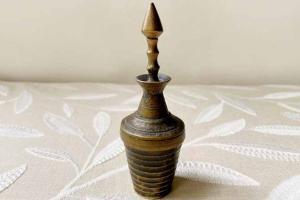
The surmedani, which Aanchal's grandmother Bhag Malhotra bought from Chandni Chowk, after moving to Delhi, following the Partition
Stories seek out writer-oral historian Aanchal Malhotra, as much as she seeks them. Sometimes, they are with her all along, and a slight trigger is all that's needed, to bring them alive. That's what happened two years ago, during Diwali celebrations at her Delhi home. The glowing diyas rekindled an old memory for Aanchal's paternal grandmother, Bhag Malhotra—that of surma (kohl), and how celebrations were incomplete without it.

Aanchal Malhotra
"As a substance, kohl remains a testament of cultural value. When I was younger, my mother and grandmother would apply it to our eyes to strengthen them, or sometimes even to ward off evil," says Aanchal, who vividly recalls her mother piercing an almond with a long needle, and holding it against a lit candle, to burn the surface. "As the almond burned, they'd hold a spoon with the concave side down and collect the soot on its surface. The consistency of the surma was not completely dry and fine, but rather a moist, viscous paste-like substance."

Eighty-year-old Bhag seen applying surma
This would then be stored in a surmedani.
What Aanchal wasn't aware of was how much women in the household loved darkening their eyes with surma on the festival of Diwali. Ancient Indian texts also point to how women applied "collyrium" on the occasion. "I don't think there was any particular reason behind this, except that it was a festival, and good reason to wear make-up. It was also economical and long-lasting. The homemade surma was such that if you applied it, you could see traces of it three days later."

Bhag’s sister-in-law Swaran Lata, who made surma using the soot from the largest diya, which burnt all night
For her grandmother, the surmedani still holds a special place. When Bhag and her sisters came to Delhi from the Frontier Province following the Partition in 1947, they were living in the barracks at Kingsway Camp. "When they could afford to, they'd venture into Chandni Chowk on the weekends. Surmewalas would sit in a line outside the Gurudwara Sis Ganj Sahib in those early years of Independent India. This surmedani [in the picture] was my grandmother's first purchases made there,"
says Aanchal, who has also written about this in the Museum of
Material Memory, a digital repository, which she co-founded with Navdha Malhotra.
After she was married, Bhag was acquainted with making surma by her sister-in-law, Swaran Lata. "On Diwali, in order to ensure that the largest diya of the house burnt all night, she [Swaran Lata] would pour an excess of mustard oil into the earthen lamp. Then breaking down twigs of the neem plant into smaller sizes, she would enfold them in layers of cotton, to create a thick, wick-like shape and immerse it into the oil. The neem, an ayurvedic plant, known to repel germs and insects, also elongated the life of the burning wick. She would then balance an earthen cover on top of the lamp and as it burnt, its smoke rising, it became soot, which collected on the surface of the cover. In the morning, she would scrape the soot off and mix into it, two drops of homemade pure desi ghee or mustard oil." This was then applied on the eyes. While the largest diya continues to burn in the Malhotra home, Aanchal, who has long made the switch to commercial kajal, says her dadi's surmedani continues to hold these memories.
Sugar hutti and other forgotten sweetmeats
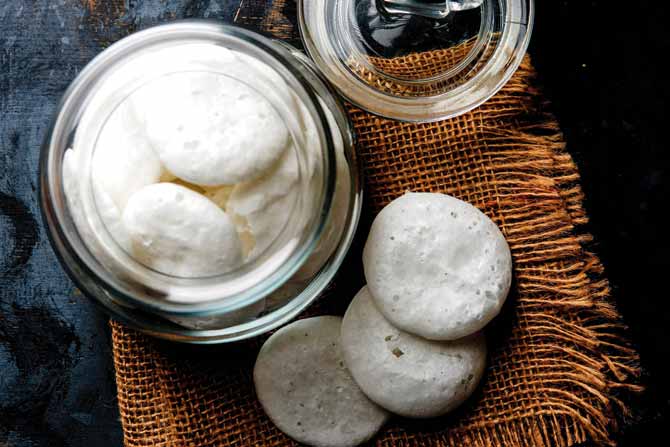
Batasha or sugar candy, along with the chinni ke khilone, were an integral part of the Lakshmi puja
Having lived an itinerant life meant that food writer Vernika Awal, who runs @delectable_reveries on Instagram, has experienced Diwali differently, at different points in time. As a child, growing up with her grandparents in Delhi, Lakshmi Puja was when she remembered the entire family coming together. "Chinni ke khilone [sugar toys] and batasha [sugar candy] used to be an integral part of the puja," says Awal. The tradition is central to North India, especially the Punjabi heartland, and common among agrarian and business communities. The sugar toys—sugar moulded into different shapes, like animals, kites or human figurines—symbolised wealth and prosperity.
"I remember how we would be given a small hut made of sugar, which we called the hutti. It was representative of a shop. We would then go to the adults and ask them to put coins inside the hutti. It was like an investment, so that we brought 'lakshmi' [wealth] into the family business. It also signified sharing wealth with others.
Since many of our relatives had their own small businesses, this tradition was followed to the tee," she recalls.
When Awal moved to Assam and then later to Mumbai, with her parents, her interaction with diverse communities meant that Diwali celebrations had become less ritualistic. "My father anyway didn't fit the bill, as he didn't have a business of his own; he was employed. Also, in places like Mumbai, you didn't really have anyone selling sugar toys. So, I had completely forgotten about it."
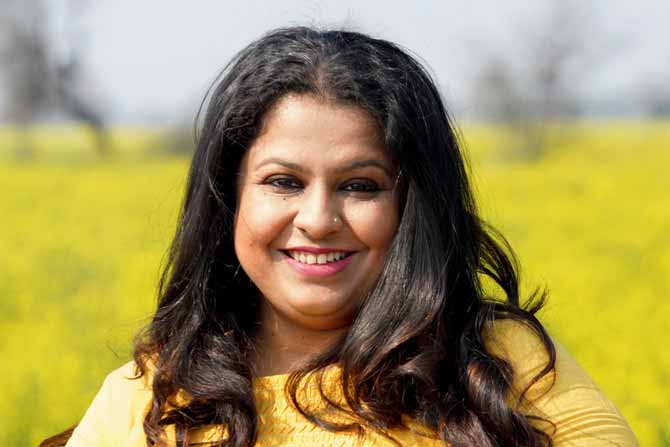
Vernika Awal
Last year, on returning to Delhi after she married, Awal realised that the tradition had ceased to continue among her extended family members, too. "Only a handful had been diligently following it," she shares. Awal, who has been using her Instagram handle to write about lost food traditions from Punjab, where she is orginally from, started researching why the custom was petering out. Since some of these sweetmeat vendors still sell the sugar toys and batashas at markets, she approached them first. "They sit there through the festive season. I learnt that many of them had lost their source of income and fallen on hard times, as nobody was buying the sweets anymore. Today, it's the artisanal mithais, that are seen as a better alternative."
Awal can't put a finger on why people are not following the tradition in the same spirit, but she feels that the disintegration of the joint family system could be one reason. "Earlier, the elderly in the house ensured that everyone held on to these traditions. Also, people adapt quickly to change. Sometimes, this change comes at a cost."
Sharing faraal in good times and bad
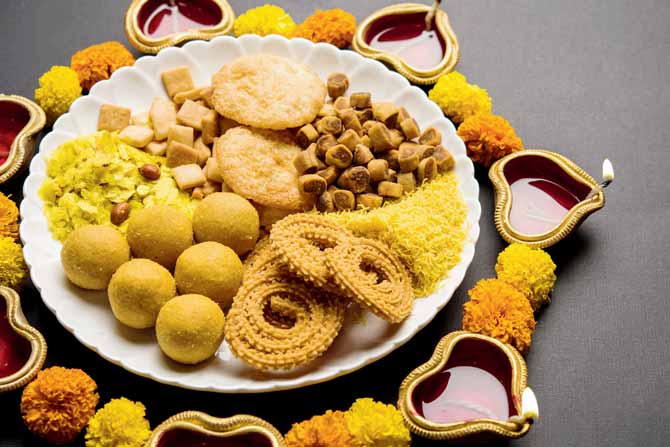
In Maharashtra, the Diwali faraal comprises chakli, karanji, chivda, ladoos, and shankarpali
In Maharashtrian households, celebrating with food trumps everything else. This is why, the Diwali faraal, a festive platter comprising karanji, chivda, ladoo, and shankarpali, made days before the festival, is still the most sought-after. Food anthropologist, archaeologist, and culinary expert Kurush F Dalal, however, bemoans how quickly the tradition of faraal-making is vanishing among families. "This used to be a well-known socio-religious, as well as socio-economic phenomena. It was the time when families would come together, and contribute to the preparation of the faraal."
This meant sitting together, chatting and cooking under one roof. It was the perfect prelude to Diwali. While it was a great bonding exercise, it also served as a safety-net. "Once the faraal was ready, it was distributed, or rather shared, between the households," says Dalal. "There would be occasions when a particular family was going through a financially rough period and wasn't able to contribute. In such times, you'd still receive your share of faraal. That was the beauty of the tradition."
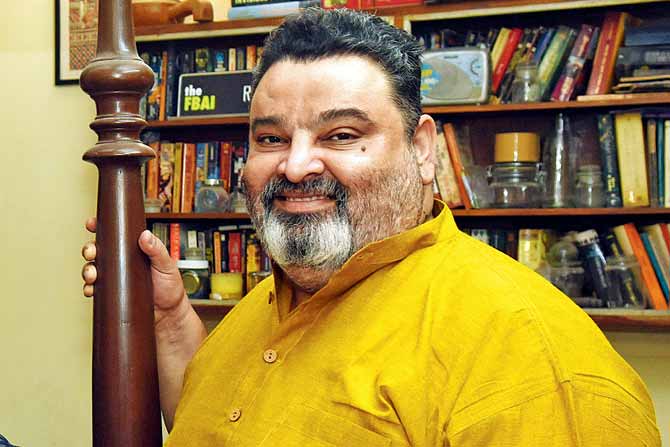
Kurush F Dalal
Unfortunately, with the emergence of nuclear family set-ups, especially in urban India, where most members have full-time jobs, food-making traditions like these have taken a hit. It has its upside, though. People now prefer outsourcing the goodies. "Several women self-help groups still make the traditional faraal, and many Maharashtrians order from them," says Dalal. This has done two things—firstly, it has empowered the SHGs, providing a steady source of income for them; secondly, the faraal tradition lives on, irrespective of who is making it. "So there is some solace, at least," he feels.
Saee Koranne-Khandekar, author and culinary consultant, has fond memories of the Diwali day breakfast, in her home. "Every member of the family was expected to be up at the crack of dawn. This was followed by the eldest woman of the house doing an aukshan (aarti), and a symbolic oil massage, and a bath using fragrant homemade scrubs. The faraal was then brought out."

Saee Koranne-Khandekar
Incidentally, chakli, which is also served as part of the faraal, was actually made fresh on Diwali morning, says Khandekar. "The warm, crisp chaklis [the flour mix is patiently roasted and milled well in advance] would be eaten with freshly churned unsalted butter or thick dahi, to mellow down the spice. A lot of people don't seem to even know that chakli can be eaten with these accompaniments, but it used to be a staple in many homes, and something that my grandmother did religiously every year."
Khandekar feels that making such an elaborate dish for breakfast on Diwali day can be quite cumbersome in homes with smaller families, as there is little or no help available. "But, I try and make a few things at home every year. My chakli bhajani [roasted flour mix] is ready for the day."
Another tradition, which many homes have long skipped, is stamping of the kareet, a small bitter melon, to symbolise the crushing of evil and the killing of Narakasura, an asura king. "We never did this at home, but I find it most fascinating that food creeps into everything."
Songs from the Kumaoni hills

Himanshu (right) playing Lord Ram, circa 2002
In Kumaon, Uttarakhand, the weeks preceding Diwali, are dedicated to the Ramleela, a living, operatic tradition that continues to be the beating heart of the region.
In this folk theatre form, the entire Ramayana is set to music.
But, even living traditions are subject to evolution and change, says filmmaker and artiste Himanshu Joshi, who has spent more than a decade researching the Ramleela performed in the region, for his film, OpeRama. "The theatre form in the metropolis is very different from what exists in the hills. Their form of expression is influenced by the popular culture of portraying any mythological figure. Unfortunately, some of these portrayals, which I witnessed during the course of my research, were not great. They are influenced by the modern-day television serials and soap operas. Add to it, the bad lighting and visual effects, which tend to mar the performance. People are also forgetting the operatic, singing tradition. The sanctity of the creation, which has been going on for generations, is slowly eroding with time," he admits.
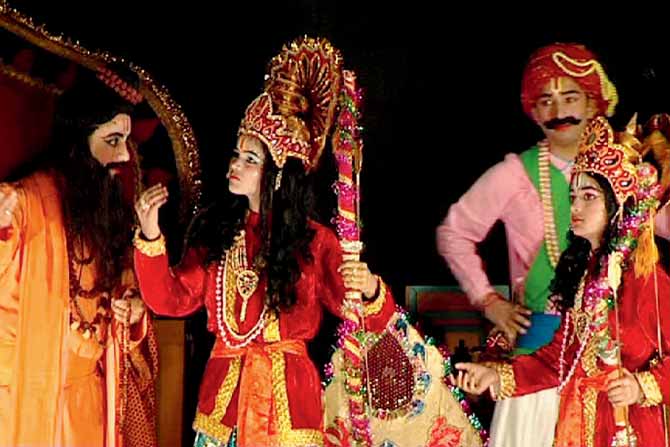
A still from OpeRama
Joshi, best known as the lead singer of rock band Indian Ocean, has a long, intertwined history with the Kumaon region. Though he grew up in Delhi, his roots are in Almora, situated on the southern edge of the Kumaon Hills, where every mohalla had its own version of the Ramleela. It was his uncle, Mohan Upreti, a veteran in the field of theatre music, who convinced him to take this legacy forward, albeit in Delhi, where Joshi, as an 18-year-old, acted in a shorter version of the Kumaoni Ramleela. From then on, it became an annual ritual of sorts, with Joshi starting out as Bharat, before moving on to be cast as Lakshman and later, even Lord Ram.
While the oral tradition has continued and thrived, through the passage of time, it's the compositions, which Joshi felt urgently needed to be preserved. "Most of the mandalis [theatre groups] have a reference book, which they treat as a gospel, where the entire form has been written and preserved. These are locked up and kept safely, and accessed only if needed. I wrote and compiled every bit down, while it was narrated to me by the teachers. The entire structure with all variations across the region, was documented carefully, since I didn't want these compositions to be lost."
By the end of it, he had a collection of over 400 compositions, most of which were in Braj and Awadhi. He eventually distilled them down to 382 pieces. The compositions were recorded, and the entire project was then submitted to the Indira Gandhi National Centre for the Arts (IGNCA) in 2010. After nearly a decade, the material will now be published into an archival hard-bound book with a pen-drive, comprising the recordings and his film. It will be available towards the end of a year, Joshi hopes.
Among the rare compositions is the Urdu song, sung during Lord Ram's sehrabandhi. It's a tradition closely linked to North India, and sung when the groom's head dress is tied, before he leaves with the wedding procession. Joshi says it used to be sung eight decades ago, but during his research, he realised that sehrabandhi was conspicuous by its absence. "I don't think the reason for the sehrabandhi not being sung anymore, is a political one. I think it's an artistic choice of the people conducting the Ramleela," he says. "There are many other compositions that have Urdu in their structure, which are still sung, because the language was commonly spoken among the locals, at some point in time."

Himanshi Joshi. Pic courtesy/Aashima Yaadava
There is another beautiful composition, Tanik Niharo Tum, where Ram, otherwise known as a Maryada Purushottam, experiences a moment of vulnerability, when he sees Sita, for the first time, walking in the garden. In the song, Ram describes the beauty of Sita, saying how the "moon pales in comparison". "Her gait is graceful like the 'gajraj' (the elephant), her waist slender as a deer," the composition reads. "In that moment, Ram becomes a purush, but he quickly realises what he has said, and tells Lakshman that he shouldn't have said that. And once again, he is back to being Maryada Purushottam. This particular composition is part of the theatre, and is not included in Tulsidas's Ramcharitmanas. It was something that someone imagined and composed." It's these stories that he feels may slowly vanish with time.
Keep scrolling to read more news
Catch up on all the latest Mumbai news, crime news, current affairs, and a complete guide from food to things to do and events across Mumbai. Also download the new mid-day Android and iOS apps to get latest updates.
Mid-Day is now on Telegram. Click here to join our channel (@middayinfomedialtd) and stay updated with the latest news
 Subscribe today by clicking the link and stay updated with the latest news!" Click here!
Subscribe today by clicking the link and stay updated with the latest news!" Click here!









